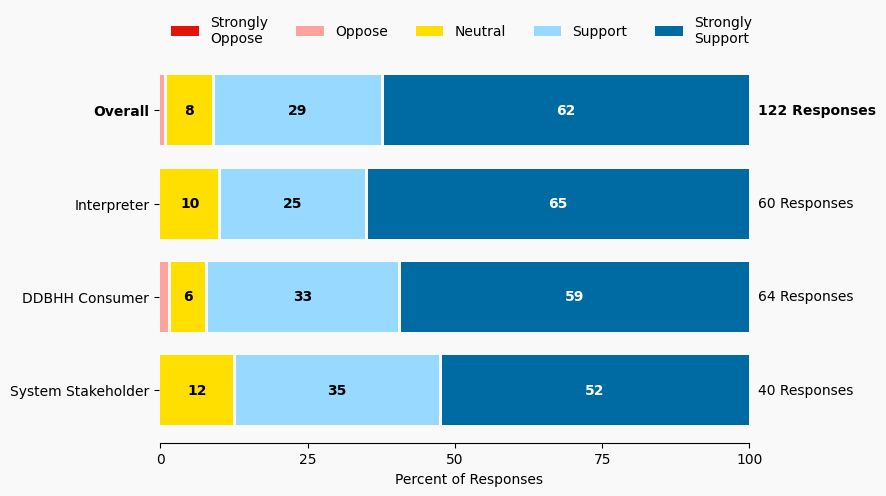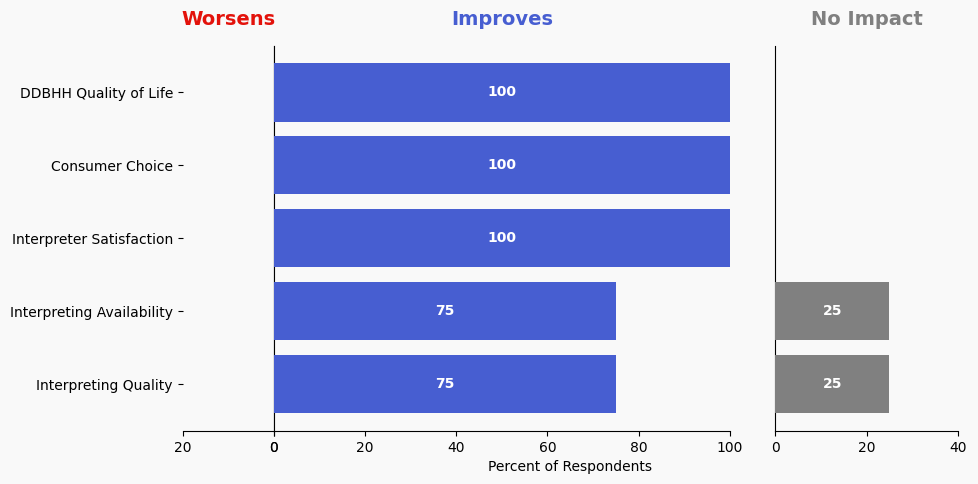89 Develop a Tool Kit for School Districts to Establish ASL Classes
Issue: Interpreter shortage
Proposed Solution: Coalition, co-led by ASL Teachers, Commission and MDE, develop and organize a tool kit to share with school districts. This tool kit can include: reasons and benefits of ASL classes, ideal qualifications for ASL teachers, recommendations where to advertise for qualified ASL teachers and recommended curricula. Particularly as there is research about the benefits of learning ASL (Deaf Gain and cognitive benefits for learning ASL), benefits for both the general hearing population as well as DDBHH person can be highlighted. This effort would require significant collaboration with MDE and other entities. For recruiting ASL instructors, emphasize role models that reflect the DDBHH communities and student bodies by having more teachers of color, male teachers and LGBTQIA teachers represented in all ASL education opportunities.
Expected outcome: Greater employability for DDBHH as ASL teachers, increase the flow into the interpreter pipeline and increase the overall number of people who have some familiarity with ASL and Deaf and DeafBlind culture.
Who is impacted: ASL students, ASL teachers, school districts, interpreter training programs
Timeline: 6 months

Summary of Support Image Description
The stacked bar charts show how respondents rated their level of support and the total number of responses. The percentage for the five support levels is shown from left to right: Strongly Oppose (Dark Red), Oppose (Light Red), Neutral (Yellow), Support (Light Blue), and Strongly Support (Dark Blue).
Respondents may identify with multiple subgroups. The overall level of support is:
Overall
Strongly Oppose: 0%
Oppose: 1%
Neutral: 8%
Support: 28%
Strongly Support: 62%
Click to see the detailed image description for each subgroup.
Interpreter
Strongly Oppose: 0%
Oppose: 0%
Neutral: 10%
Support: 25%
Strongly Support: 65%
DDBHH Consumer
Strongly Oppose: 0%
Oppose: 2%
Neutral: 6%
Support: 33%
Strongly Support: 59%
System Stakeholder
Strongly Oppose: 0%
Oppose: 0%
Neutral: 12%
Support: 35%
Strongly Support: 52%
Overview of Respondents Opting for In-Depth Solution Analysis
After indicating their support level, 2% of the 122 respondents opted in to further assess whether the solution would worsen or improve on five metrics. Of the opt-in reviewers (3 respondents), 66% supported the solution, 33% were neutral on the solution, and 0% opposed the solution.
The remaining 119 respondents did not opt in to further assess the solution. Of these people, 91% support the solution, 7% were neutral on the solution, and 0% opposed the solution.
Reviewer Evaluation of Solution Effectiveness

Solution Effectiveness Image Description
The stacked bar charts show how respondents assessed the effectiveness of this solution based on five metrics. For each metric, the percentage of respondents is shown from left to right: Worsens (Red), Improves (Blue), No Impact (Gray).
DDBHH Quality of Life
Makes It Worse 0%
Makes It Better 100%
No Impact 0%
Interpreter Satisfaction
Makes It Worse 0%
Makes It Better 100%
No Impact 0%
Consumer Choice
Makes It Worse 0%
Makes It Better 100%
No Impact 0%
Interpreting Availability
Makes It Worse 0%
Makes It Better 75%
No Impact 25%
Interpreting Quality
Makes It Worse 0%
Makes It Better 75%
No Impact 25%
Reviewer Feedback and Insights
Interpreter
One comment from Interpreters expresses appreciation that the solution focuses on placing Deaf teachers in classrooms, which creates job opportunities for Deaf individuals while exposing high school students to ASL and the possibility of interpreting as a career.
Deaf, DeafBlind, Hard of Hearing
No comments were submitted.
System Stakeholder
One comment from a System stakeholder supports the idea, and highlights the importance of educating school districts about DDBHH laws and services while helping them overcome obstacles to offer ASL to all students.
PREVIOUS SOLUTION
88 Establish a Professional Group for ASL Teachers
Issue: Nationwide ASLTA (American Sign Language Teachers Association) chapters have been disbanded. Minnesota’s ASL teachers have fewer supports and have no central organization for standards and initiatives. This impacts their ability to advance their work for the benefit of their students.
NEXT SOLUTION
90 Develop Policy Standards for ASL Teachers
Issue: Interpreter shortage
Leave a Reply